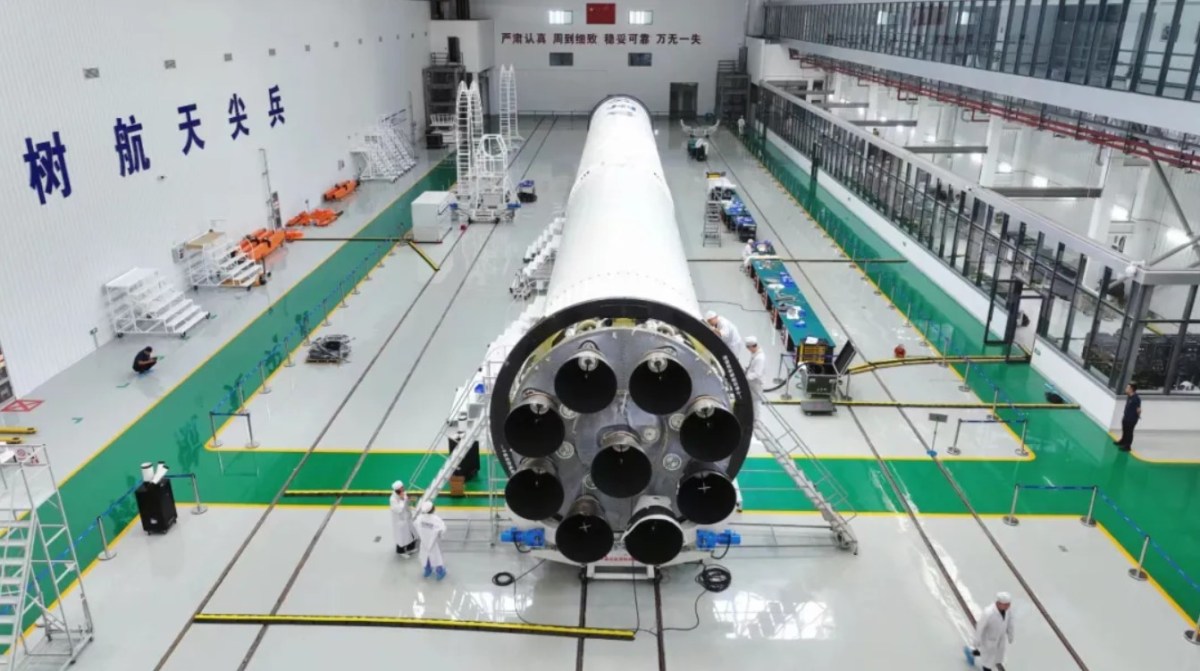Hausjärvi, FINLAND — A rocket stage test firing by Chinese commercial company Space Pioneer ended in catastrophic failure and a dramatic explosion Sunday.
Space Pioneer conducted what was intended to be a static-fire test of the first stage of its Tianlong-3 launch vehicle at a test facility in Gongyi country, Henan province, Sunday, June 30.
Amateur footage captured by Gongyi citizens and posted on Chinese social media shows the nine-engine test stage igntiing and then, exceptionally, taking off. Hold-down clamps and other structures are typically used to securely keep stages in place.
The stage is seen climbing into the sky before halting, apparently with its engines shutting off, and returning to Earth. The stage impacted the ground around 50 seconds after it took off, apparently with much of its kerosene-liquid oxygen propellant remaining, causing a large explosion. The Tianlong-3 first stage would likely fire for a number of minutes on an orbital flight.
Space Pioneer was conducting its test as a buildup to an orbital launch of the Tianlong-3, which is benchmarked against the SpaceX Falcon 9, in the coming months. The company announced earlier this month that it has secured $207 million in new funding.
Shanghai-based digital newspaper The Paper reported Henan officials as saying there were no casualties reported.
Space Pioneer issued its own statement later, stating there was a structural failure at the connection between the rocket body and the test bench. The rocket’s onboard computer automatically shut down the engines and the rocket fell 1.5 kilometers southwest. It reiterated earlier reports that no casualties were found. The company said the test produced 820 tons of thrust.
Static-fire testing is part of rocket development or pre-launch testing. Issues are not uncommon during development. A SpaceX Starship prototype exploded following a static-fire test in 2020. However, an event in which the stage escapes its hold-downs and launches appears unique.
The orbital launch attempt was expected to take place at new commercial launch facilities near Wenchang spaceport on Hainan island. That launch attempt could now face a lengthy delay.
The incident comes shortly after China’s high-profile success of returning the first ever lunar far side samples to Earth with Chang’e-6. It also follows yet another incident of a hypergolic rocket stage falling over a populated area.
It is unknown how the event will affect Space Pioneer in terms of delays, penalties and its continued operations. Space Pioneer says it will conduct an analysis and restart testing with new hardware as soon as possible.
The incident could also have wider impacts on China’s commercial space ecosystem. The sector has received increasingly strong backing from central, provincial and city governments.
Delays to Tianlong-3, which is intended to become reusable, could also affect Chinese megaconstellation plans. China needs to boost its access to space and overall launch capacity to construct the constellations.
China issued policy guidelines and regulations on the development of commercial launch vehicles in the country in 2019.
Space Pioneer notably became the first Chinese commercial launch company to reach orbit with its Tianlong-2 rocket in 2023.
Tianlong-3 is much larger than Tianlong-2, with a diameter of 3.8 meters and a takeoff mass of 590 tons. It is to be capable of lifting 17 tons of payload to low Earth orbit (LEO), or 14 tons to 500-kilometer sun-synchronous orbit.
